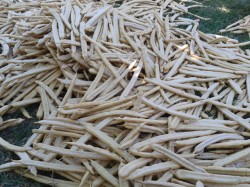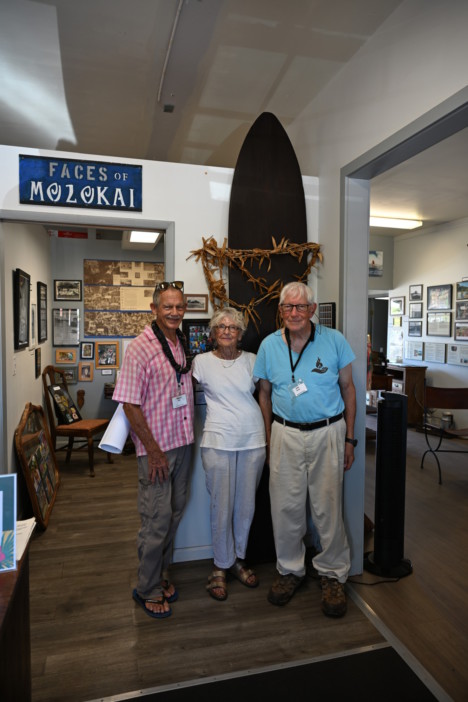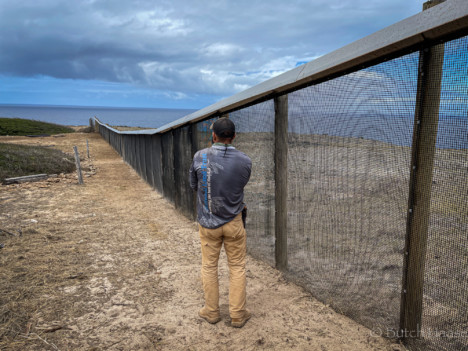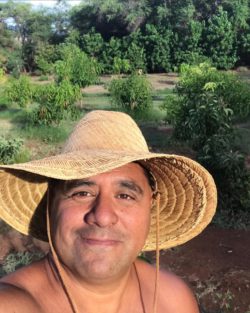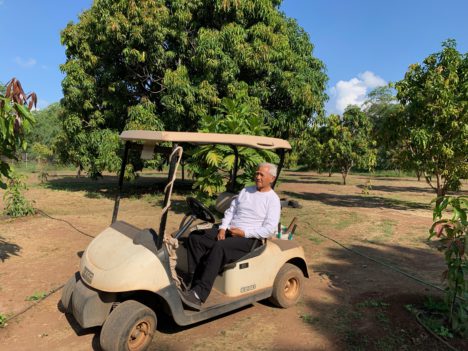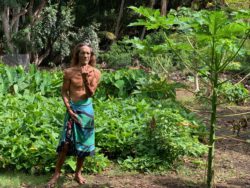Monday, July 21st, 2008
![]()
Opinion by Neil Logan
Kiawe (Prosopis pallida) is a food of antiquity from the Americas. For more than 6,000 years. Ancient cultures have used kiawe and its relatives for food, fuel and raw materials.
The “official” story is that kiawe was first brought to Oahu for Queen Emma and planted by Father Alexis Bachelot as cuttings from the Jardin du Rois in Paris, France.
Supposedly, from this one tree, all of the kiawe in Hawaii were born and subsequently spread by cattle and people as shade and fodder. The original tree was thorn-free originating from Southern Peru. Its mate was probably a thorn-free too, and from northern Peru or southern Ecuador.
A seed grown tree would have retained the memory of all it had ever been thereby giving it the potential to have thorns.
Somebody knew kiawe’s potential as an animal feed and shade tree and its ability to grow in very harsh conditions and capitalized on its ability to be spread by animals. By 1965, after only 127 years, there was an estimated 155,000 acres of kiawe in the state.
Ranchers made money from the forest by fattening their cattle creating some of the largest sustainable cattle operations in the U.S. Bees were brought in to increase Kiawe pollination and by 1935 Hawaii had become the largest exporter of honey in the world.
Since then, serious cattle ranching has fallen out of economic feasibility and kiawe has developed a reputation as a “trash” tree and a nuisance to beach-lovers because of its thorns. In many places kiawe forests are overgrown, becoming potential fire hazards.
However, these trees present an opportunity. By cleaning up the forest through thinning and trimming, we can create a park-like atmosphere that is accessible. The wood could be burned to generate enough electricity to operate hammer mills and other equipment required to process the kiawe into value-added products.
Kiawe beans are a non-genetically modified, non-toxic food that has been eaten by humans since times before corn was ever developed as a crop. It is known as a healthful food that mitigates diabetes, heart disease and colon cancer. There is a growing demand for both flour from the pods and honey from the flowers.
Once the forest is fire safe, it will be easy and perhaps necessary to replant with other food crops like coconuts and taro or endemic plants such as Willi Willi, Uhi Uhi, Hala Pepe, Ohe Makai, Alahe’e and others. Kiawe creates a humid microclimate and reforesting has the effect of helping to recharge the ground water.
Water is, of course, the most important issue on Molokai, yet there are others. Recent stumbling blocks to developing a kiawe industry on Molokai come from Molokai Ranch shutting its doors and disallowing any activity on their land in the wake of La’au.
The people of Molokai need job security and food and energy self reliance in the event that Hawaii is cut off from mainland supplies.
We need to find a way to keep Molokai beautiful while protecting access to clean water, food and positive work that makes the world a better place. The community needs to own a vertically integrated kiawe industry that folds the resources directly back into the community.
Once the infrastructure is in place, Molokai could have enough food to feed the island’s population and energy to run basic needs without diesel. In the process we may begin to heal our land, our community and our reputation as exporters of clean, healthy, non-genetically modified food.
If the above interests you, please contact Neil Logan on the Big Island www.rnl3.net and neil@rnl3.net.
